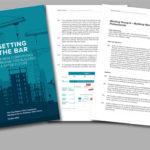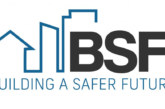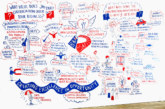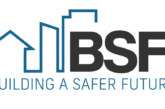Since the Grenfell Tower tragedy three years ago, work has been ongoing to raise standards across building safety. The Joint Industry Board (JIB) has been working with industry partners and organisations on Working Group 2: Installers of the Competence Steering Groups to assist in this process of shaping policy and ultimately working to improve safety in all stages of a building’s planning, construction, occupation and demolition. Setting the Bar is the second and final report of the Competence Steering Group and is an update on the interim report, Raising the Bar, published in August 2019.
The announcement by Secretary of State Robert Jenrick started the process of bringing new building safety regimes into law through the Building Safety Bill. The Bill has entered an examination phase as part of consultation and will return to be evaluated through the Houses of Parliament in the autumn.
The HSE welcomed the publication of the Government’s draft Building Safety Bill. HSE CEO Sarah Albon explained: “The HSE fully supports the measures set out in the draft Building Safety Bill to move forward and enhance building safety across England. We are currently working with other parts of Government, key regulators and industry to establish how the new legislation can be implemented in a practical way and create a new regime that improves building safety standards and competence across the industry.” The HSE is represented on the ECS Steering Committee and plays an important role in helping the electrotechnical industry to raise standards and improve safety.
New provisions will impose a general duty in relation to competence of persons carrying out any work on all buildings to ensure compliance with the Building Regulations. Ensuring the skills, knowledge and experience of the individual through CSCS and Partner Scheme, such as ECS, is an important element of this competence framework in ensuring the person has been trained and assessed to the relevant industry standard. Recognition of the role of personnel certification, alongside assessing the competency of the company, has been a core message in this work. Setting the Bar reaffirms this commitment to individual qualifications and certification schemes.
Key elements and recommendations
The proposed overarching system of competence set out in Setting the Bar is made up of four key elements:
- a new competence committee sitting within the Building Safety Regulator
- a national suite of competence standards — including new sector-specific frameworks developed by 12 working groups
- arrangements for independent assessment and reassessment against the competence standards
- a mechanism to ensure that those assessing and certifying people against the standards have appropriate levels of oversight
CSG Chairman, Graham Watts, Chief Executive of the Construction Industry Council, said: “We would see higher-risk buildings as an essential starting point for the new competence frameworks for the whole of the built environment, which would result in a step change across the sector and change of industry culture.”
The JIB has been feeding into this process through Working Group 2 and Setting the Bar sets out the recommendations for:
- The industry adopting a framework consisting of:
- Level 2 or 3 qualifications for individuals
- CSCS or other card scheme, including the Electrotechnical Certification Scheme (ECS)
- CPD refresher training and maintenance of individual skills
- A core knowledge of fire safety in buildings — training to be standardised and made mandatory
- Third party certification of companies
- To help bring sectors falling outside the above into line with a defined plan
- Standardisation of terminology in educational terms for all installer sectors
- Support from industry and government to raise CSCS awareness in the domestic market
- To enhance card checking processes by contractors
- Industry wide CPD refresher training programme to be introduced for each sector
Setting the Bar explains: “These recommendations are intended to ensure much improved competences for installers and a means that will enable supply chains, owners and occupiers of buildings to recognise people who are competent to work on higher-risk buildings…
“The WG2 view is that a site manager or supervisor should require evidence that on-site operatives attending on behalf of an installation company have the relevant qualification and a CSCS card appropriate for their role.”
Standards and qualifications
Jay Parmar, JIB Chief Executive, commented: “The JIB welcomes and is proud to have contributed to the raising of standards for competence-based qualification systems in the wider electrotechnical industry. This work is complemented by the Fire, Emergency and Security Systems employer group’s work to recognise new Level 3 qualifications, apprenticeships and experienced worker assessments within the ECS structure in this vital part of the industry. This will be the base for the future progression of these operatives when working on higher-risk buildings.”
Recognising the value of competence-based qualifications in our industry, and the importance of site managers and supervisors being able to evidence qualifications, identity and competence in the supply chain, the JIB released the ECS Check system earlier this year. ECS Check provides invaluable and necessary client oversight so that those with responsibility for ensuring workers on a project are competent, can easily check their qualifications, training and assessments on a project by project basis and throughout the supply chain. This is already being used successfully in the private sector and on major infrastructure projects in the UK.
Jay continued: “ECS was listed as an exemplar within Dame Judith’s original report given the high standards which already applied for those operating on construction sites and we have been working in the background to lead in those areas where improvements can be made to raise the bar on competence. This includes a new CPD facility for ECS cardholders, employers and training providers which will be released shortly, and improvements to the standard for fire safety knowledge. We will continue to work with industry to bring those sectors without a history of formal qualifications up to this important mark for training and competence and would welcome support from MHCLG and others to promote this good work to the wider domestic sector.”
The Setting the Bar report can be found here: http://cic.org.uk/admin/resources/setting-the-bar-9-final-1.pdf









